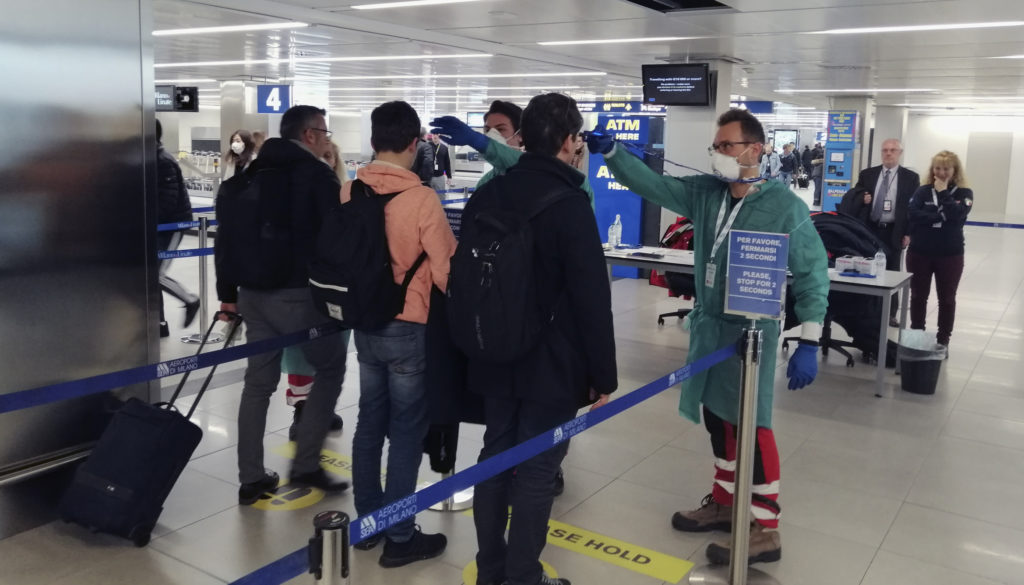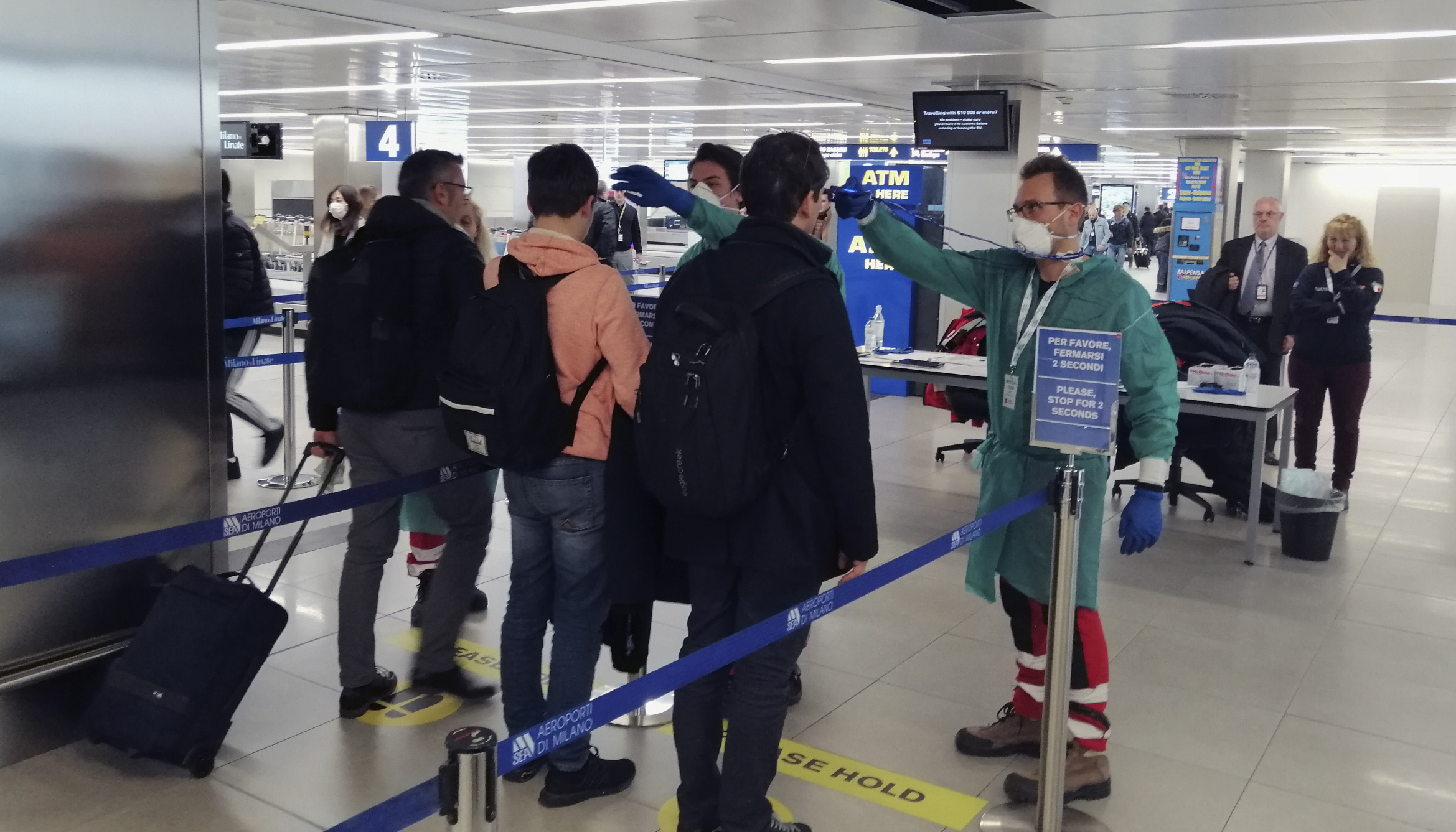How Coronavirus Became a Political Problem

The Italian government’s decision to expand its lockdown from two small areas of the north to encompass the entire country is a sign of its increasing desperation to control the spread of novel coronavirus. The number of positive cases by the evening of March 9 stood at at least 7,000 with more than 400 people having lost their lives. This has even been described as Italy’s “darkest hour” by Giuseppe Conte, the country’s prime minister.
The quarantine was initially extended to Lombardy and 14 provinces in neighboring regions, affecting about quarter of the population of Italy, (16 million people), and the productive engine of the nation’s economy. But it has become clear that even that isn’t enough, and now the whole nation is being brought under the measures. Movement is banned unless for necessary work-related reasons, emergencies or health reasons.
Schools and universities (or at least all teaching activities) across Italy were already closed and a ban had been imposed on all activities where crowding makes it impossible to maintain a distance of a meter between people. Cinemas and theaters are out of action. All sports events have been postponed until April, unless they can be held behind closed doors or without public attendance. Gyms and swimming pools have to enforce hand washing and one meter’s distance between people. Civil and religious ceremonies, including funerals, are no longer permitted.
There are practical difficulties in enforcing such widespread restrictions – and there has already been a veritable exodus of people from the north to the south. This reflects the difficulties for any democratic government in having to tackle a public health crisis of such magnitude. There are limits to how far science can determine decisions which are, ultimately, political in nature.
Italy, as the European country at the forefront of the crisis, has had little to draw on except the response in China. There, a hardline government policy appears to be working but it becomes a different matter when a non-authoritarian country needs to take action. Countries like Italy have less compliant political cultures so any large-scale measures will necessarily play out differently.

The Italian government’s approach has been modeled on the Chinese, involving a hardline response designed to contain the virus through the establishment of “no-go” areas, restrictions on movement combined with massive testing for the virus.
At the same time, conscious of the criticisms of China’s lack of transparency, the Italian government has been completely open about its decision-making. It has been providing extensive information about the spread of the virus at regional and provincial levels in order to educate and inform people of the critical nature of the emergency. The press has reproduced this data in the form of daily interactive “contagion maps”, allowing the reader to drill down to see precisely where the reported cases are located.
Redrawing the map
This approach – hardline but transparent – is generating visible social divisions. The whole of northern Italy, from the beginning of the outbreak, has been increasingly characterized as a kind of pariah state, even though the initial red zones were in relatively small areas.
That was not just in the perception of other countries (which began to discourage or restrict travel to areas in the north), but also in the Italian media and the public response. There have been examples of outright discrimination towards Italians living in the so-called “infected areas”, who were apparently no longer welcome in other parts of the country.
This is a paradoxical reversal of Italy’s traditional north-south divide. The stereotype is generally of hard-working northerners criticizing “benefit-dependent” southerners, who come to the north to find work.
The irony is that the drastic decisions taken by the government are aimed primarily at protecting the south’s social and economic infrastructure. The risk is that losing control of the contagion will lead to a complete collapse of the national health system there, since it is nowhere near as robust as Lombardy, the worst hit region of the north. There are only around 1,500 intensive care beds in the seven regions of the south and islands and a chronic shortage, in some areas, of specialized medical personnel.
Filippo Anelli, president of the National Federation of Doctors, said: “If Lombardy is struggling, imagine what will happen in the south, where there are enormous disadvantages in terms of equipment and personnel.” He spoke of the likely need for field hospitals and military back-up, especially in regions such as Calabria and Molise.
To confront the looming economic devastation, the government is rushing through a package of emergency measures in a decree worth €7.5 billion (£6.5 billion), which raises this year’s projected national economic deficit from 2.2% to 2.5%. This will offset the extra costs of health and civil protection, unemployment, support for businesses and banks and so on – all measures which will need approval by the European Commission. Yet, the long-term economic impact of the lockdown is incalculable.
Political potshots
President Sergio Mattarella has even intervened. He stressed that people must respect the governement’s decisions but also warned that the government must speak with one voice – a reference to differences of opinion between the coalition parties currently in power.
Mattarella also warned that opposition parties should refrain from making unnecessary political attacks on the authorities. Leader of the far right League, Matteo Salvini, has said Conte is “not up to managing the crisis”. He has indicated that his party will vote against the batch of economic measures in parliament.
If, therefore, Italy is on a war footing, it is not exhibiting any real sense of national unity. Managing a public health crisis in a democracy involves striking a balance between measures protecting citizens and the social and economic impact of those decisions – meaning democratic politics cannot be suppressed.
The jury is still out on whether Italy has successfully struck the right balance. It may not be long before other nations need to decide if the Italian response to the coronavirus is a model to follow or a lesson to be learned.




























































































